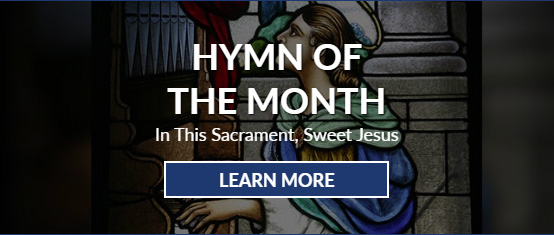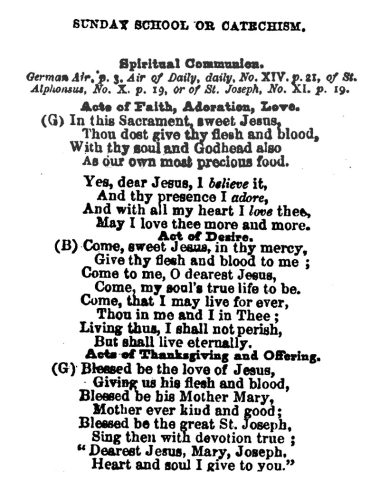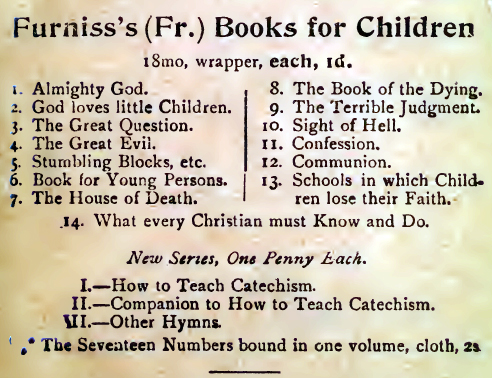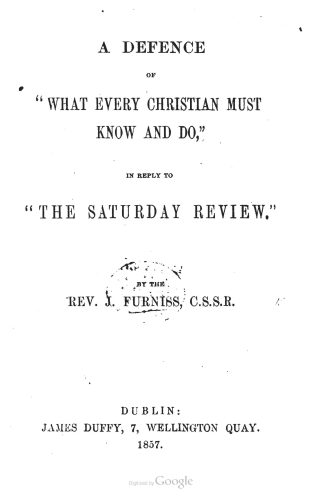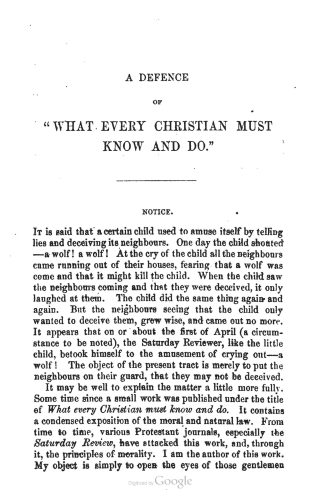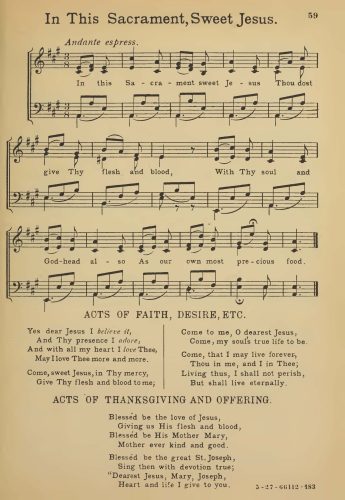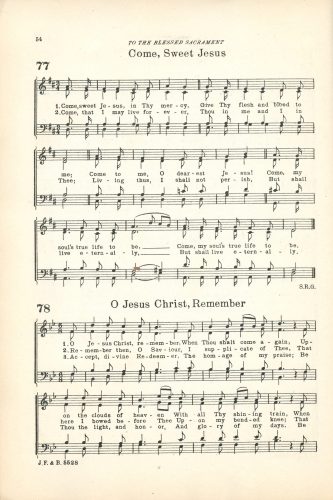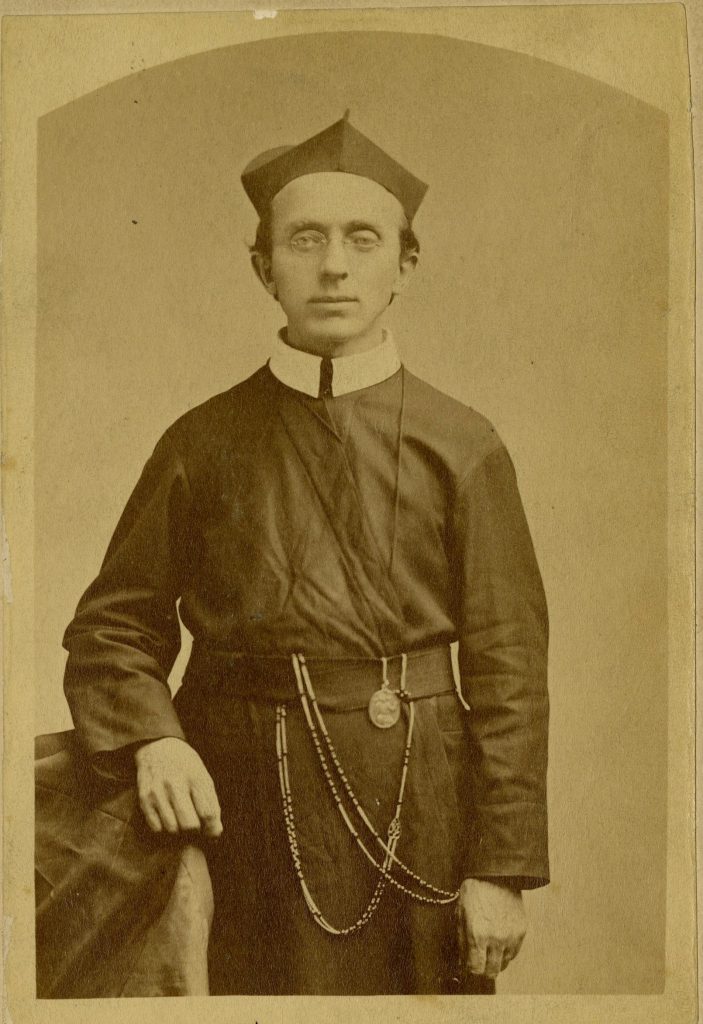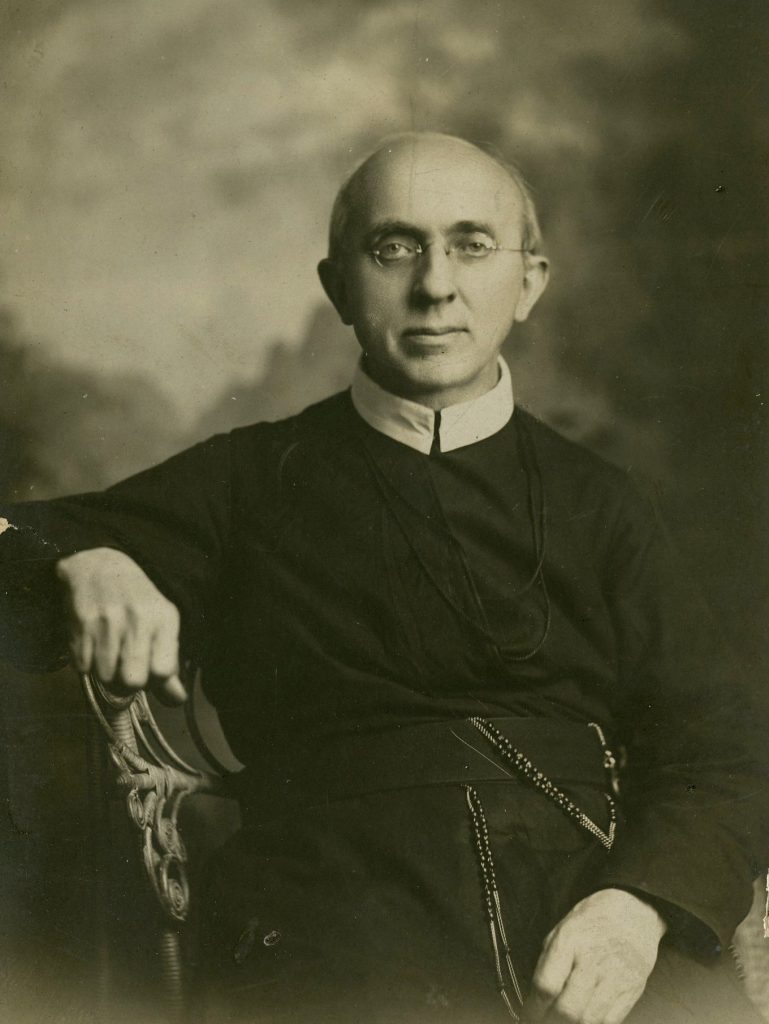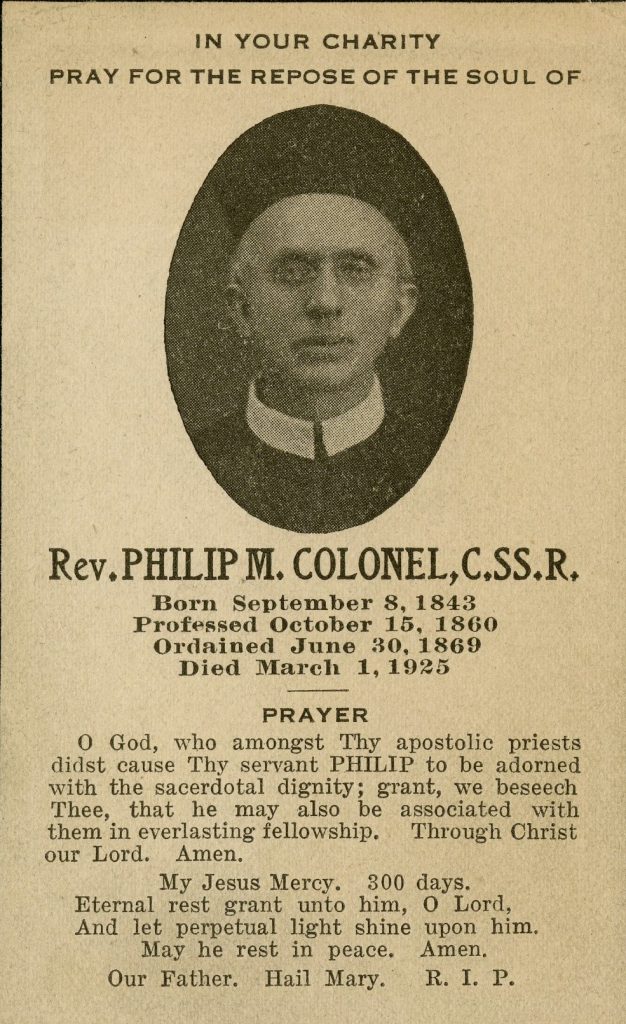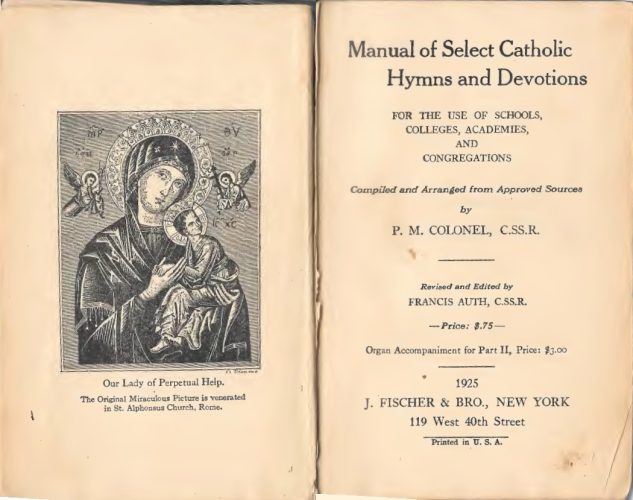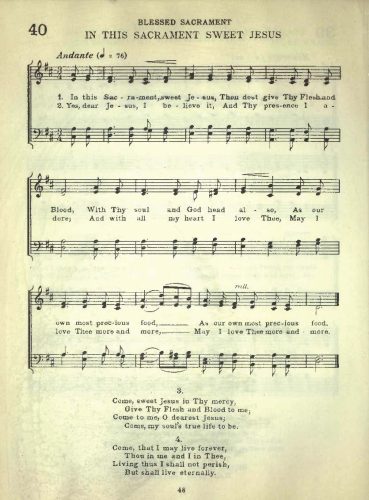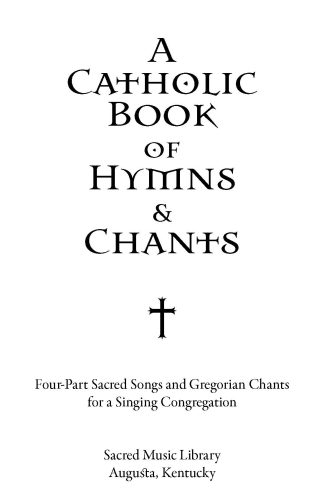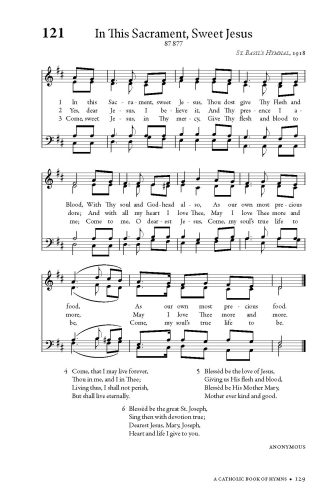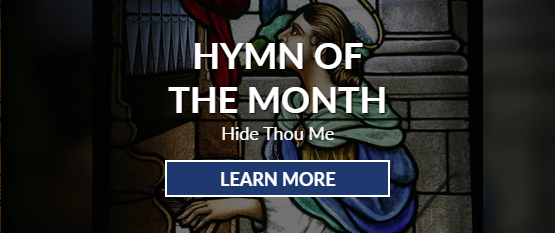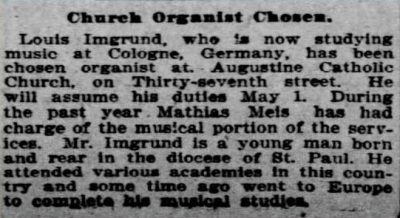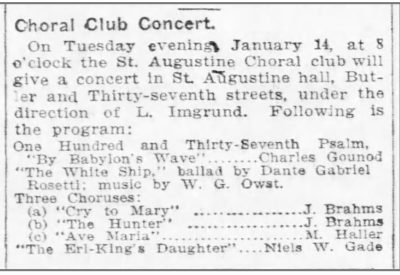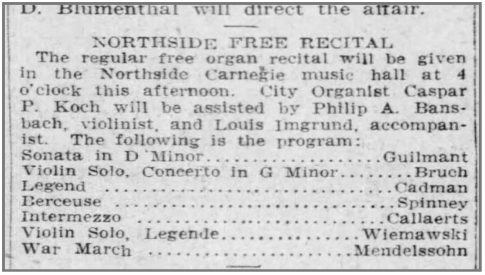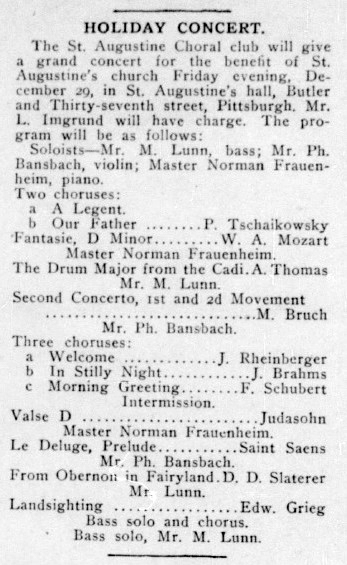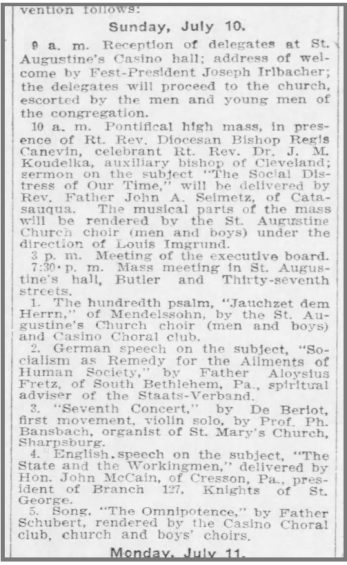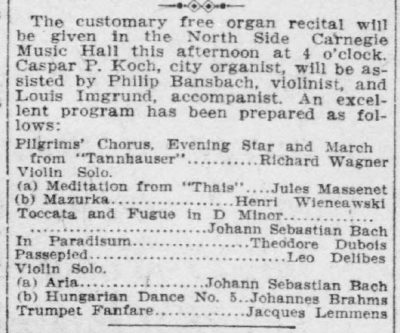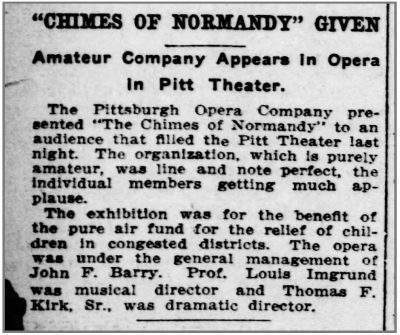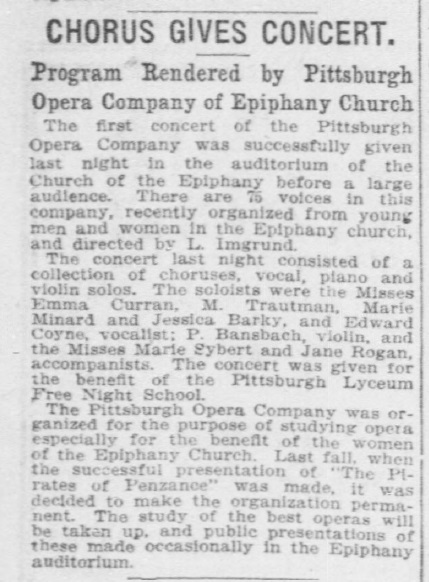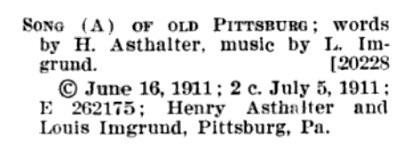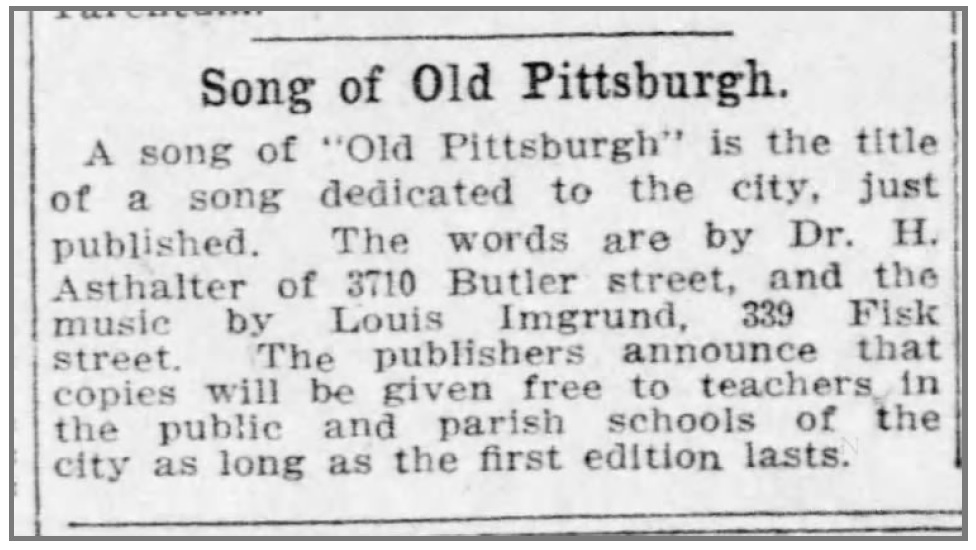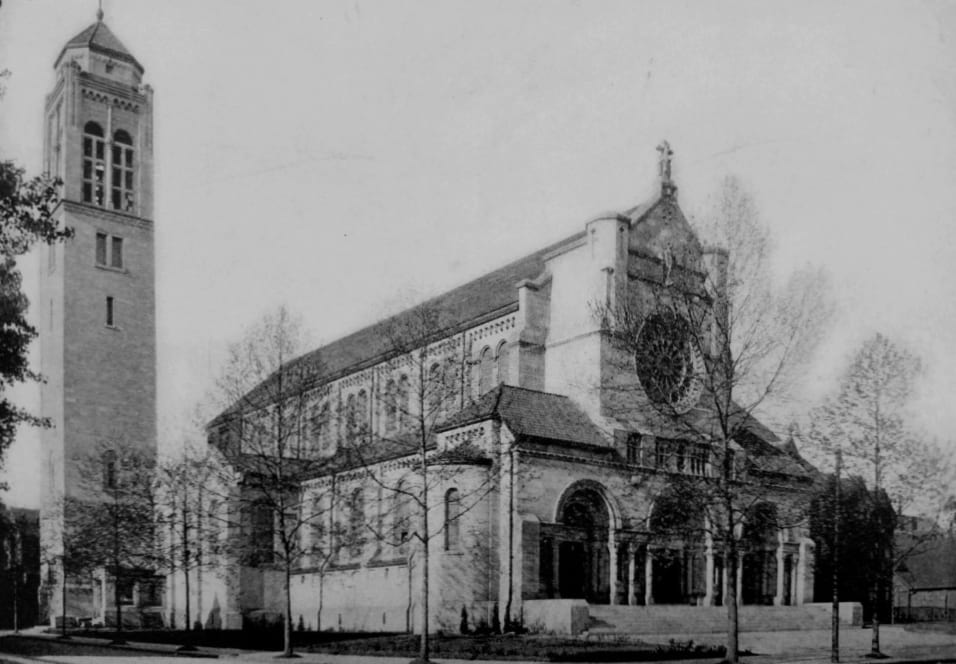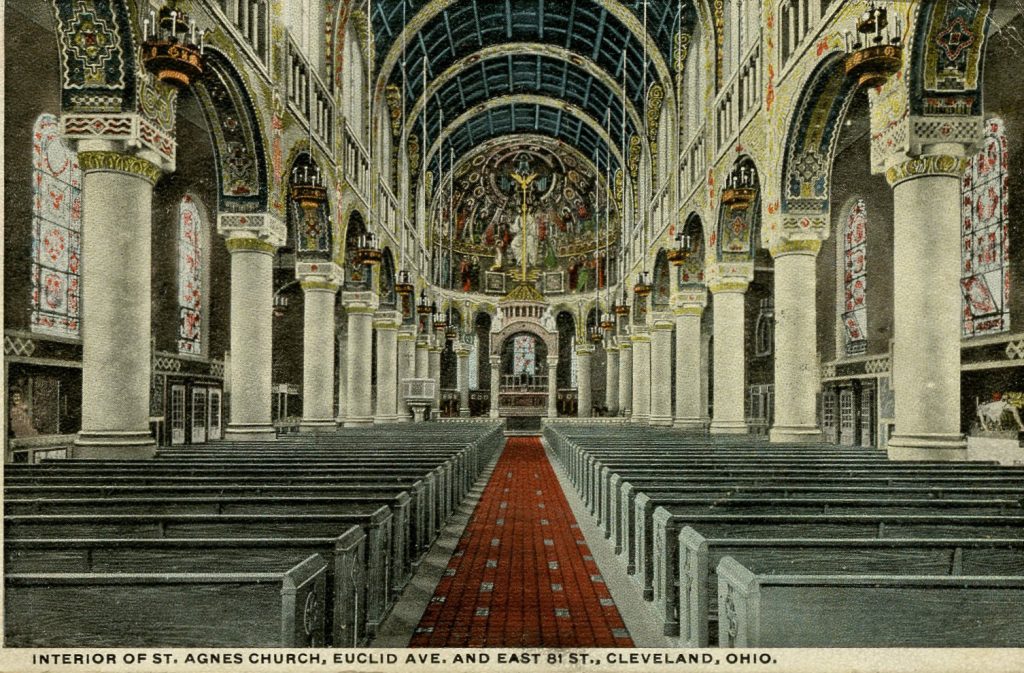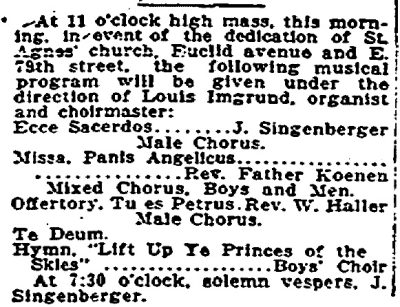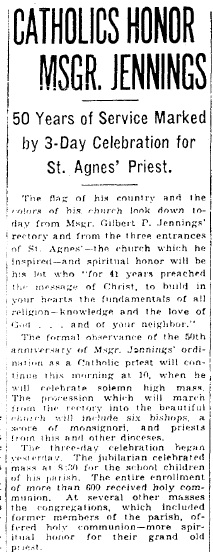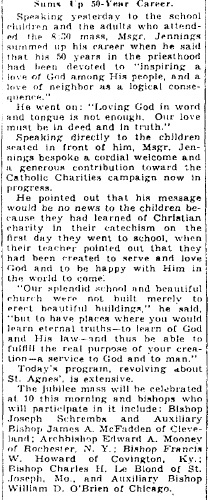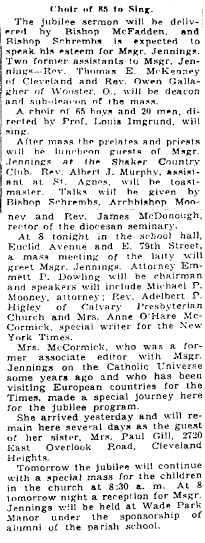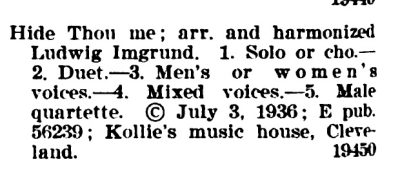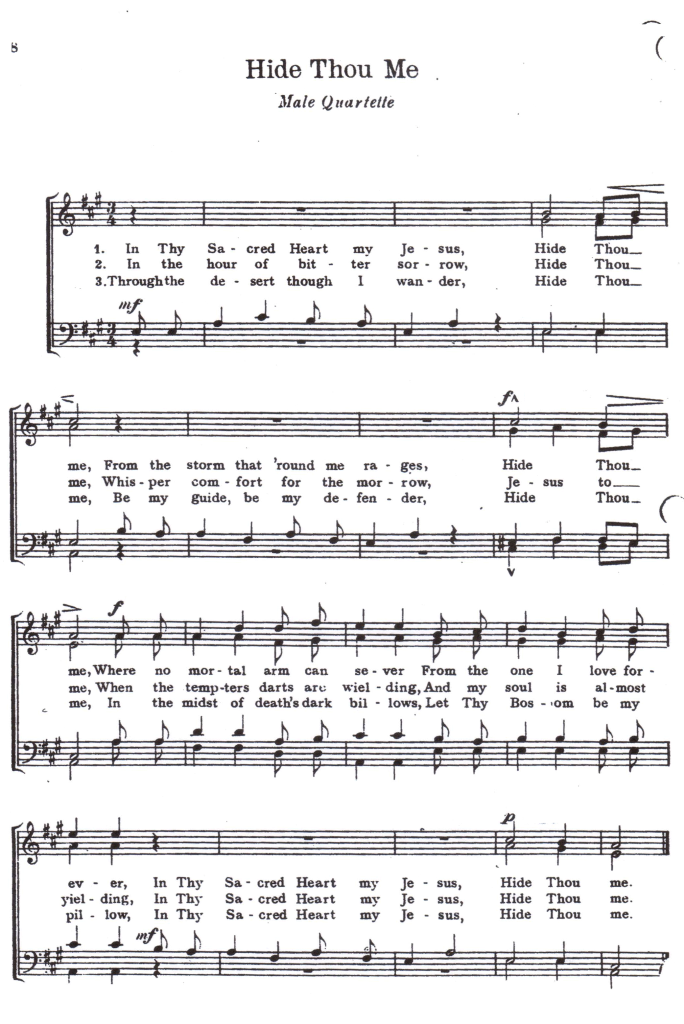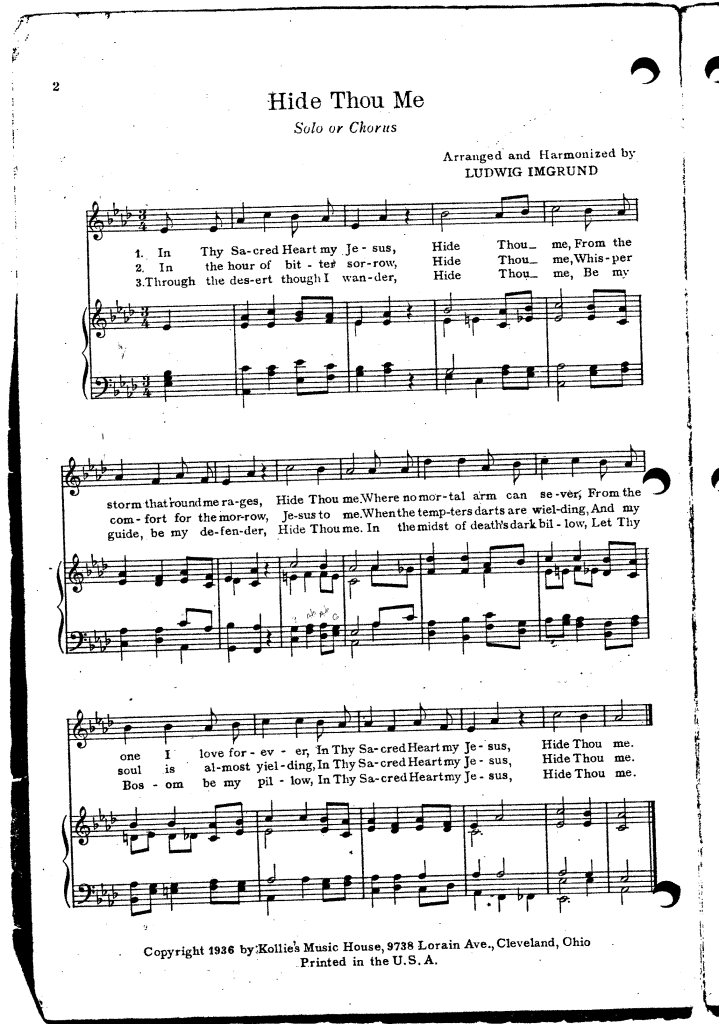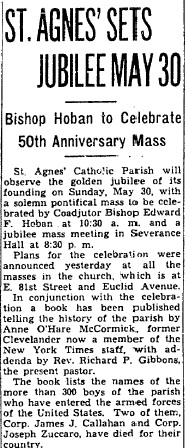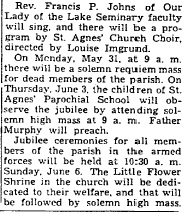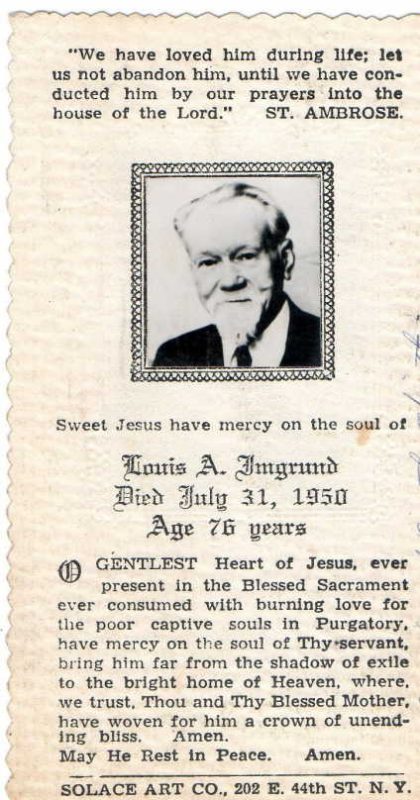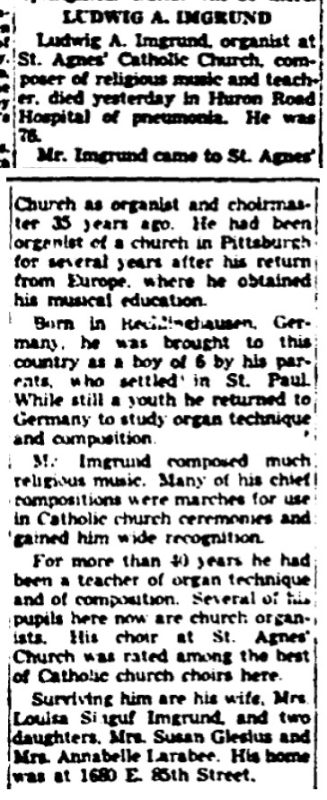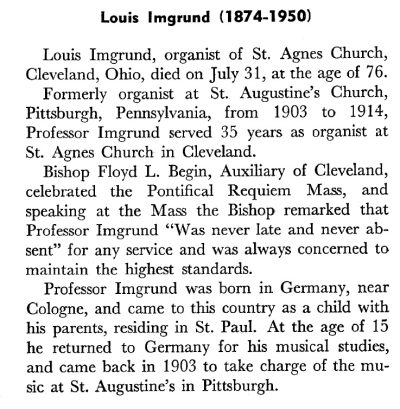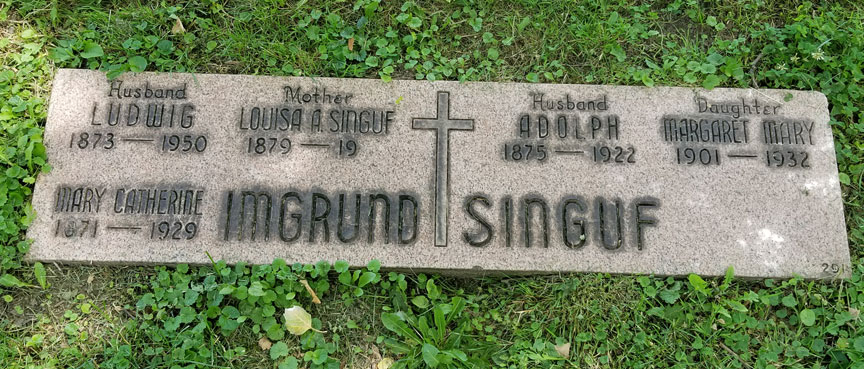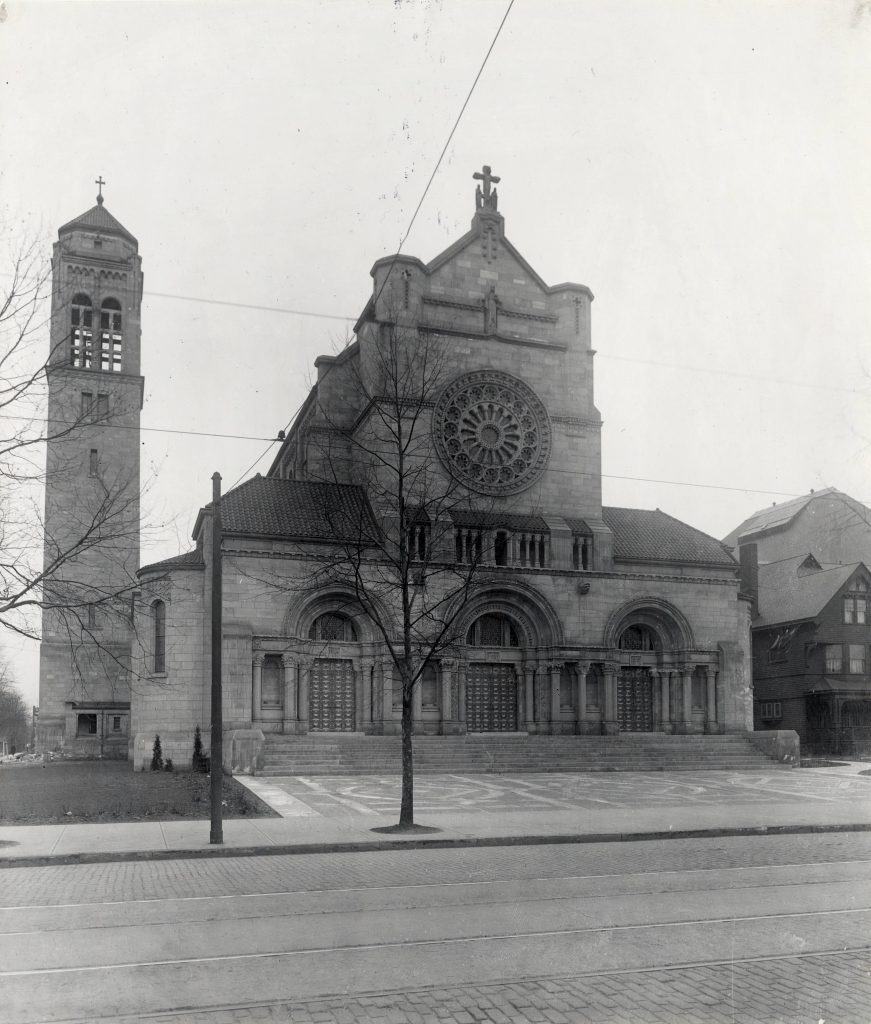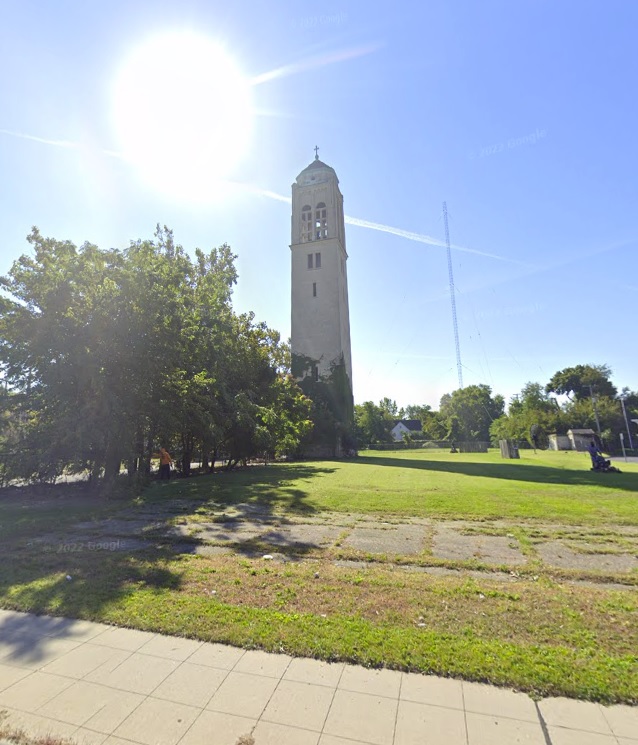Father John Furniss, C.SS.R. (1809-1865), composed the words for this hymn for use at Mass and it first appeared in his HYMN-BOOK FOR SUNDAY SCHOOL OR CATECHISM published in 1861, and was sold throughout Dublin, London, and Derby by publisher Thomas Richardson and Son. It consisted of six verses.
John Furniss was born near Sheffield, England on June 19, 1809 where is father was a wealthy master-cutler. He attended Sedgley Park School, St. Mary’s College in Oscott, and Ushaw College, where he was ordained a Roman Catholic priest in 1834. He was a resident priest at Doncaster in South Yorkshire, England for five years and afterwards traveled for eight years throughout Europe and the East. He returned home in 1847, and spent some time at Islington, a district in the North of Greater London. He joined the Congregation of the Most Holy Redeemer, the Redemptorists, at St. Trond (Sint-Truiden), Belgium in 1851. He served for a short time as a missionary in England and Ireland but eventually devoted himself completely to missions for children.
This devotion to children inspired him to write hymns and books for their needs in simple language. Among his more popular works are the Sunday-School or Catechism, the Hand-Book for the Sunday School Teacher, The Sight of Hell and What every Christian must Know and Do.
What every Christian must Know and Do, published in 1857, which contained a condensed exposition on the moral and natural law, drew a critical review by the Protestant publication the Saturday Review. Father Furniss wrote a defense in response to this review.
Father Furniss continued to write hymns and books for children until his death on September 16, 1865 in Clapham, England. More than four million of his booklets were published and many of his booklets are still available today.
Other hymns written by Father Furniss which gained some popularity include:
- The Rule of Life or In the Morning when I Waken
- Infant Jesus, Meek and Mild
- O Heavens, Earth! This Wonder Hear
In This Sacrament Sweet Jesus, found its way into other Catholic hymnals in America and England which include: the CROWN HYMN BOOK, 1862; the CROWN OF JESUS MUSIC, 1864; the CANTICA SACRA, 1865; PETERS’ SODALITY HYMN BOOK, 1872 and 1914; LAUDIS CORONA, 1880; the PAROCHIAL HYMN BOOK, 1881 thru 1897; MANUAL OF SELECT CATHOLIC HYMNS, 1885 and 1932; the SODALIST HYMNAL, 1887; CATHOLIC HYMNS, 1898; SUNDAY SCHOOL HYMN BOOK, 1887 thru 1935; ST. BASIL’S HYMNAL, 1888 thru 1953; CATHOLIC SCHOOL AND SODALITY HYMNAL, 1900; the HOLY FAMILY HYMN BOOK, 1904; YOUTH’S MANUAL FOR CHURCH AND SCHOOL, 1908; CROWN HYMNAL, 1913; DE LA SALLE HYMNAL 1913; the BOOK OF HYMNS, 1913; SURSUM CORDA, 1925; OUR LADY OF MERCY Volume 2, 1927; HYMNS USED BY THE PUPILS OF THE SISTERS OF NOTRE DAME, 1921 and 1948; the ALVERNO HYMNAL, 1953; NEW ST. BASIL’S HYMNAL 1958.
Free downloads of many of the hymnals noted above can be found online at Corpus Christi Watershed website or at the Internet Archive.
The Melodies
Several melodies were composed for this hymn including by Wolfgang Amadeus Mozart (1756-1791); a melody by Msgr. Lorenzo Perosi (1872-1956); William J. Marsh (1880-1971); a German melody; an Irish and French melody; a melody by Sister Mary Alexis Donnelly (1857-1936); a melody by E. F. MacGonigle; a melody by Joseph Mohr; a melody by J. Storer; a couple of airs identified as St. Alphonsus and St. Joseph; and a melody by Samuel Richard Gaines (1869-1945).
Of these melodies, two became popular, the German melody, and the melody by Samuel Richard Gaines.
The German melody featured here from the SUNDAY SCHOOL HYMN BOOK, 1907 was composed for the nativity carol Schönstes Kindlein, and appeared in the 1858 edition of Bern H. Francis Hellebusch’s Katholisches Gesang-und Gebet-Buch. This melody can be found in other American hymn books including:
- The Catholic Youth’s Hymn Book, 1871; the St. Basil’s, (1906 thru 1918) and the De La Salle, 1913 hymn books for the text Hear Thy Children, Gentle Jesus
- Laudate Choir Manual, 1942 for the text Dear Little Jesus, Sweetest Savior
- The St. Mary’s Manual Chants and Hymns, 1924; the Mt. Mary Catholic Hymnal, 1937; the St. Rose Catholic Hymnal, 1940; and Manual of Select Catholic Hymns, (1885 and 1925) for the text Lovely Infant, Dearest Savior
The second melody for the text Come, Sweet Jesus, first appeared in the MANUAL OF SELECT CATHOLIC HYMNS AND DEVOTIONS, 1885. This collection of hymns was published for the parish services of the Redemptorists Fathers in the United States and was compiled and arranged by Father Philip Mary Colonel, C.SS.R. (1843-1925) *
The only clue that we have that points to a composer of the second melody are the initials S.R.G., or Samuel Richard Gaines. His name also appears in the Diocesan Hymnal of the Cleveland Diocese, Part Two, Devotional Hymns, as one of the musicians responsible for harmonization’s for the hymns Sweet, Mother Hear and On This Day O Beautiful Mother. The Diocesan Hymnal which consisted of three volumes, was compiled by Bishop Schrembs of Cleveland, Ohio. In addition, the melody appears in:
- the ST. BASIL’S HYMN BOOK from 1888 thru 1953, for the text In this Sacrament, Sweet Jesus.
- the NEW ST. BASIL HYMNAL, 1958 with a melody composed by William Marsh for the text In this Sacrament, Lord Jesus.
*About Father Philip Mary Colonel, C.SS.R.
Recently, I learned more about Father Philip Mary Colonel, C.SS.R., and his role in Catholic music from the Redemptorists Archivist in Philadelphia. Philip was born on September 8, 1843 in Kloster Ebrach, Bavaria. His father, who was born in France, was a staunch Catholic, and his mother, whose birthplace was Alsace Lorain, was a devout Lutheran. Philip was the youngest of nine children and as a boy served at mass and sang in the choir of his parish church. Afterward, he played the organ there.
His father died when he was young, and shortly after this his mother and siblings came to the United States and settled in New York. At age seventeen, Philip entered the Congregation of the Most Holy Redeemer. He professed his vows in 1860 and was ordained in 1869. On the day Philip was invested with the Redemptorists habit, his mother became a Catholic. He was stationed in Buffalo at St. Mary’s Church for 25 years, during which time he composed and published his hymnal of 1885. His brother Joseph was a member of the St. Louis Province of the Redemptorists. Their sister became an Ursuline nun.
Father Colonel died on March 1, 1925 while a member of the St. Michael the Archangel community in Baltimore. He was the oldest Redemptorists in the Province, he served fifty-six years as a priest and sixty-five years in religious life. I hope this short exposé on Father Colonel’s life, brief though it be, will find favor with him and his brother Redemptorists Father John Furniss, and bring awareness to many of you of their contribution to Catholic music.
Reflection
I remember singing this hymn at Mass on so many occasions when I sang in St. Mary’s Choir (1977-2010). This is a beautiful hymn to sing for Communion and during Eucharistic Adoration. The verses are clear and unmistakable in professing the Catholic belief in the real presence of Jesus Christ in the Blessed Sacrament.
During Communion we ask Jesus to come so that we can receive Him and be united to Him and never more to be separated from Him. The hymn is even appropriate to sing after Communion because we thank Jesus for coming, and truly believe that He is present in our souls. Take a moment to reflect on these verses and ask your music director to incorporate this lovely hymn into your next Mass or Eucharistic Adoration. The arrangement I sang in St. Mary’s Choir was from the Revised Edition of the ST. BASIL’S HYMNAL, 1918.
I want to thank Peter Meggison, producer of The Devotional Hymns Project for granting permission to link to a recording by Vocalist Teri Kowiak and colleagues who joined organist Peter Krasinski at St. Joseph Church in Needham, Massachusetts. This is the German melody from the SUNDAY SCHOOL HYMN BOOK.
A special thank you to Noel Jones, AAGO in granting permission to link to A Catholic Book of Hymns & Chants with nearly 300 time-honored traditional Catholic hymns and Chants including In this Sacrament Sweet Jesus.
Also, to the Redemptorists Archives, Philadelphia for their help in providing details of Father P. M. Colonel.
Below are recordings from The Devotional Hymns Project website featuring St. Joseph Church in Needham, Massachusetts, and a recording from A Catholic Book of Hymns. Also, a computer generated piano arrangement of the Samuel Gaines melody. The tempo is approximate but should provide the listener a good sense of what the hymn sounds like. All the hymns are in the public domain.

